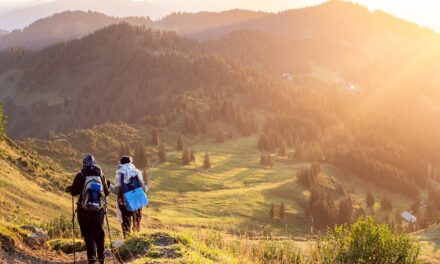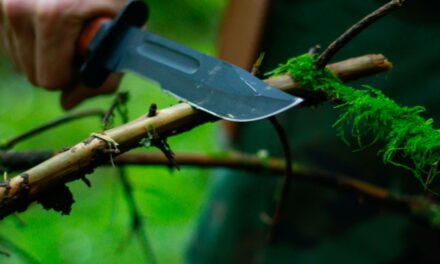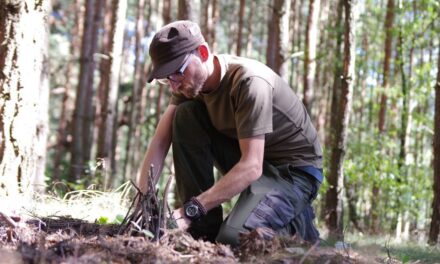Introduction: Venturing into the Wild
Embarking on a wilderness adventure can be exhilarating, but it also comes with its fair share of challenges. One of the most fundamental skills for any outdoor enthusiast, especially beginners, is mastering the art of navigation. In a world dominated by technology, the reliance on GPS devices has grown, yet the importance of traditional navigation skills remains paramount. Understanding the landscape, reading a map, and using a compass are skills that not only enhance your outdoor experience but are also crucial for safety.
In this guide, we delve into the essential wilderness navigation techniques that every beginner should know. These time-tested methods, often overshadowed by modern technology, are your true allies in the heart of nature. They can mean the difference between a rewarding journey and a distressing ordeal.
Why is it essential for every outdoor enthusiast to learn these skills? The wilderness can be unpredictable. Weather conditions change, electronic devices fail, and trails can be misleading. In such scenarios, your knowledge of basic navigation techniques becomes your lifeline. Let’s embark on this journey of learning and empowerment, ensuring that your next wilderness adventure is not only enjoyable but also safe.
Understanding and Mastering Basic Navigation Skills
The Map: Your Primary Navigation Tool
Maps are more than just pieces of paper; they are the key to understanding the terrain you are navigating. Start by learning to read topographic maps, which offer a three-dimensional perspective of the terrain, showing elevations, water bodies, forest cover, trails, and other landmarks. Familiarize yourself with map symbols and color codes. The contour lines, for instance, help understand the terrain’s shape and elevation changes, which is crucial in planning your route.
The Compass: Your Directional Guide
A compass, while seemingly simple, is an indispensable tool for wilderness navigation. It points you to magnetic north, helping orient your map and determine your direction. Practice taking bearings and learn to adjust for magnetic declination (the difference between true north and magnetic north). Remember, your compass doesn’t need batteries or a signal, making it reliable in remote settings.
Natural Navigation: Using the Environment
Beyond maps and compasses, the natural environment offers navigation cues. The position of the sun, the stars, and even the growth patterns of moss and trees can provide directional guidance. For example, in the Northern Hemisphere, the sun rises in the east and sets in the west, offering a general sense of direction. At night, locating the North Star (Polaris) can help you find true north.
Modern Navigation Tools: GPS and Smartphone Apps
While traditional methods are critical, embracing modern tools like GPS devices and smartphone apps can enhance your navigation capabilities. They offer real-time location data and can be invaluable in emergencies. However, always have a backup plan. Batteries drain, signals get lost, and devices can malfunction, especially in harsh wilderness conditions.
Practice and Preparation
Navigation skills improve with practice. Start in familiar areas, gradually moving to more challenging terrain. Regularly practice using a map and compass together, and if you’re using a GPS device or smartphone app, understand its features thoroughly before heading out. Additionally, always inform someone about your plans and estimated return time.
Summary and Key Takeaways: Navigating the Wilderness with Confidence
Embarking on wilderness adventures requires more than just courage and enthusiasm; it demands the essential skill of navigation. Whether you’re a seasoned explorer or a beginner, understanding and mastering various navigation techniques is vital for your safety and enjoyment in the great outdoors.
Recap of Key Points
- Map Reading: A fundamental skill for any wilderness enthusiast. Topographic maps provide valuable information about the terrain and are crucial for route planning.
- Compass Use: Learning to use a compass in conjunction with a map is essential for determining direction and staying on course.
- Natural Navigation: Skills like using the sun, stars, and natural landmarks can be lifesavers, especially when technology fails.
- Modern Technology: GPS devices and smartphone apps offer additional navigation support but should not be solely relied upon.
- Practice: Regular practice in different environments enhances your navigation skills and prepares you for various scenarios.
Final Thoughts
Wilderness navigation is both an art and a science. It blends traditional skills with modern technology, intuition with knowledge, and observation with practice. As you venture into the wilderness, remember that the best tool you have is a prepared and informed mind. Respect the natural environment, understand its challenges, and embrace the learning journey.
Lastly, always prioritize safety. Let someone know your plans, carry emergency supplies, and never underestimate the unpredictability of nature. With the right skills and mindset, you can navigate the wilderness with confidence and truly enjoy the beauty and solitude it offers.








